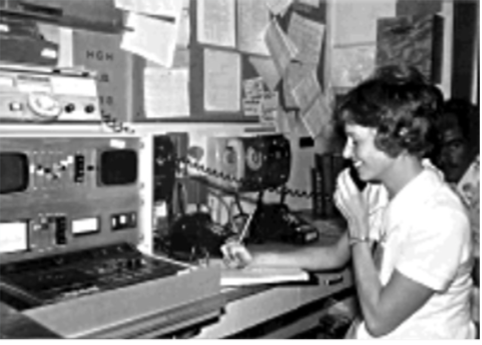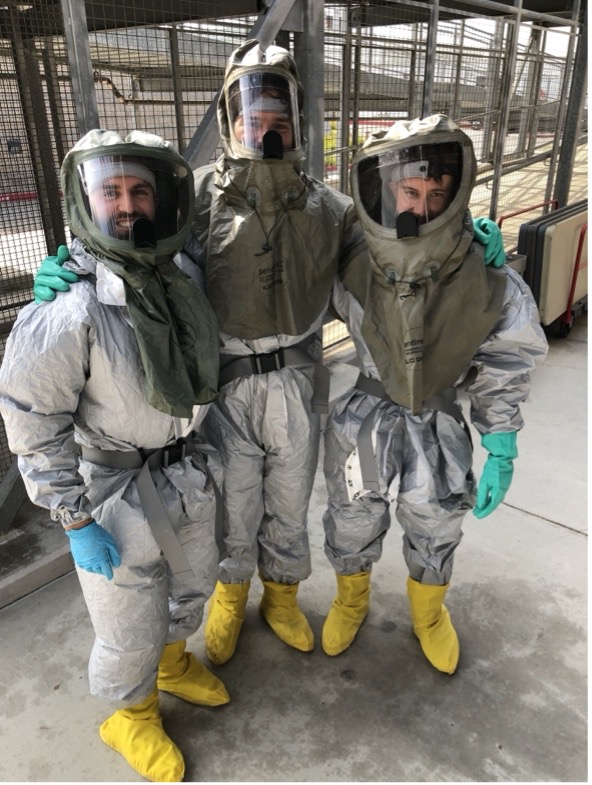EMS and Disaster Faculty
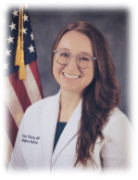
Kelsey Wilhelm, MD
Director of EMS and Disaster preparedness programs, Harbor-UCLA Department of Emergency Medicine
Base Station Medical Director, Harbor-UCLA Medical Center
Associate Medical Director Adult Emergency Department, Harbor-UCLA Medical Center
Associate Medical Director, South Bay Disaster Resource Center, Harbor-UCLA Medical Center
Medical Director, City of Compton Fire Department
Emergency Physician, Trauma and Critical Care Team, NDMS, ASPR-US DHS

Tabitha Cheng, MD, FAEMS
Director of Prehospital Research and Education, Harbor-UCLA Department of Emergency Medicine
Medical Director, UCLA Center for Prehospital Care
Associate Base Station Medical Director, Harbor-UCLA Medical Center
Associate Fellowship Director, Harbor-UCLA EMS Fellowship
Medical Director, Burbank Fire Department
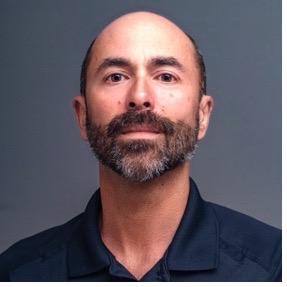
Ross Fleischman, MD, MCR
Medical Director, South Bay Disaster Resource Center
Medical Team Manager, FEMA USAR Task Force CATF-2/USA-2
LA County Base Station
Harbor-UCLA has served as a designated Base Station for the Los Angeles County EMS Agency since 1969, and is historically recognized as “Rampart General” from the television series Emergency!—a role that helped introduce modern paramedicine to the public and cemented Harbor’s place in EMS history.
Today, we continue that legacy as the second busiest base station in LA County, handling over 17,000 calls annually with a team of 48 Mobile Intensive Care Nurses (MICNs) and EMS-focused faculty. We provide 24/7 online medical control, oversight, and consultation to paramedics across the South Bay region.
Our Office of Prehospital Care team supports base operations, performs case review, education, and continuous quality improvement to ensure safe, evidence-based care across the region. Harbor-UCLA remains a central pillar in the South Bay where the future of prehospital care is shaped every day.
Harbor-UCLA Office of Prehospital Care Staff




Staff: Yvonne Elizarraraz, Antoinette Salas, Staphany Roldan, Remedios (Remy) Manicad
South Bay Disaster Resource Center
As the designated Disaster Resource Center (DRC) for Region 4, Harbor-UCLA plays a central role in preparing for, responding to, and recovering from large-scale mass casualty events, public health crises, and regional surge scenarios through planning exercises, interagency coordination, and logistical support for surrounding hospitals and EMS.
Since its designation, Harbor-UCLA has led efforts to build regional surge capacity, coordinate resource allocation, and support multi-agency disaster response. We manage caches of critical supplies (e.g., PPE, ventilators, Chempack), maintain 24/7 mass decontamination capabilities, and operate deployable tent systems to expand treatment capacity during mass casualty events.
Harbor-UCLA also convenes regular planning meetings and drills with “umbrella” hospitals and healthcare coalition partners, runs annual disaster exercises, and provides targeted training in incident command, hazmat response, and mass casualty triage.
With deep clinical expertise as a Level I Trauma Center, Pediatric Trauma Center, and STEMI Receiving Center, Harbor-UCLA stands at the intersection of regional coordination and operational readiness—ensuring the South Bay’s healthcare system can withstand and recover from disaster with speed and resilience.
Decontamination Team
Our Decon Team is trained and equipped to handle hazardous materials (HazMat) exposure scenarios and CBRNE incidents. Working closely with our emergency department and regional EMS partners, the team ensures rapid response capability, patient decontamination, and hospital protection in the event of chemical or biological contamination.
HERT (Hospital Emergency Response Team)
The Hospital Emergency Response Team, one of two in the county, is a multidisciplinary field deployment group trained to integrate with EMS and Fire operations for complex field extrications or other incidents.
Event Medicine
Harbor-UCLA faculty and EMS-trained clinicians provide medical oversight and field support at large-scale public gatherings, including sports events, concerts, and city-sponsored events. Our event medicine footprint includes coordination with fire, law enforcement, and venue stakeholders to ensure rapid, integrated care for attendees and participants. (Super Bowl LVI, FIFA World Cup, Music Festivals, Olympics etc.)
Research and Pilot Programs
Harbor-UCLA EMS Faculty both lead and support innovative field-based research and pilot initiatives that advance EMS practice across Los Angeles County and beyond.
LA-DROP (Los Angeles Development and Rapid Operationalization of Prehospital Blood)
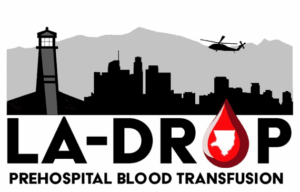
Launched in 2025, LA-DROP is a landmark prehospital blood transfusion initiative led by LA County Fire Department, City of Compton Fire Department in partnership with Harbor-UCLA, the LA County EMS Agency, and the San Diego Blood Bank. As the first ground-based PHBT program in the county, LA-DROP represents a transformative advancement in prehospital care for patients experiencing life-threatening hemorrhage before hospital arrival.
Visit the LA-DROP Website here.
The South LA CPR Initiative: Increasing bystander CPR rates in Gardena and Compton
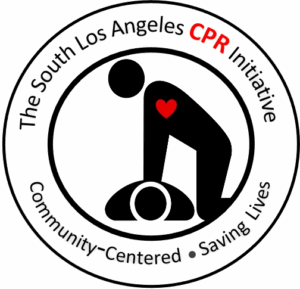
The South LA CPR Initiative is a three-year community-based collaborative, sponsored by a $1 million grant from the CareStar Foundation, dedicated to increasing bystander CPR rates and improving cardiac arrest survival outcomes in Compton and Gardena. Recognizing significant disparities in survival rates, we are conducting community focus groups to identify barriers and facilitators to CPR and AED (Automated External Defibrillator) use. By partnering with the community, we aim to develop sustainable interventions that equip residents with the knowledge, skills, and confidence to take lifesaving action and ultimately improve cardiac arrest survival rates.
PIs/Investigators: Tabitha Cheng, Craig Goolsby, Jake Toy, Shira Schlesinger, Kelsey Wilhelm, Esmeralda Melgoza (Stanford), Kabir Yadav
Pedi-PART/PediDOSE

The Pediatric Dose Optimization for Seizures in Emergency Medical Services (PediDOSE) study is an emergency medicine study designed to evaluate if a standardized method for paramedics to administer seizure medication leads to timely delivery of the right dose.

The Pediatric Prehospital Airway Resuscitation Trial (Pedi-PART) is a multicenter study evaluating which of three airway management strategies—bag-valve mask (BVM), supraglottic airway (SGA), or endotracheal intubation—is most effective for children who have stopped breathing in the prehospital setting.
EMS Education
The Paramedic Training Institute (PTI) of the Los Angeles County EMS Agency and the UCLA Paramedic Program at the UCLA Center for Prehospital Care collaborate with Harbor-UCLA Medical Center to provide clinical training for their paramedic students. These students complete immersive clinical rotations in our Emergency Department, where they develop essential bedside skills under the supervision of our emergency medicine nurses and physicians. Harbor-UCLA faculty, fellows, and residents contribute to the didactic and procedural instruction within both programs. Notably, two core Harbor-UCLA Emergency Medicine faculty serve as medical directors for these programs: Dr. Dipesh Patel for PTI and Dr. Tabitha Cheng for the UCLA Center for Prehospital Care. These partnerships reflect Harbor-UCLA’s ongoing commitment to advancing EMS education and fostering interdisciplinary prehospital training.
EMS faculty, fellows and residents help in creating system-wide, state, and national EMS education:
- Emergipress: https://dhs.lacounty.gov/emergency-medical-services-agency/home/emergi-press/
- EMS for Children Innovation and Improvement Center (EIIC): https://emscimprovement.center/education-and-resources/peak/ Saidinejad (Core Faculty) is part of the Executive Core and domain co-lead for the Knowledge Management domain creating, with multiple Harbor-UCLA faculty, clinical toolkits (PEAKs) for ED and EMS professionals.
- California Fire EMS Disaster (CFED): Most recently Jake Toy (Core Faculty), Nichole Bosson (Core Faculty), Jonathan Warren (EMS Fellow), and Bijan Arab (EMS Fellow) presented as speakers.
- EMS for Children Education Forum: Shira Schlesinger (Core Faculty), Joelle Donofrio-Odmann (PEM Alumni), and Marianne Gausche-Hill (Faculty Emeritus) https://emsa.ca.gov/ems-for-children/
- National Association of EMS Physicians: Multiple core faculty, fellows and residents present research and provide core education.
- Pediatric EMS Podcast: Joelle-Donofrio-Odmann (PEM Alumni) https://naemsp.org/the-pediatric-ems-podcast/
- High School Stop the Bleed Education: The Measure B–funded FAST (First Aid for Severe Trauma) Train-the-Trainer program is a collaborative initiative between UCLA, Harbor-UCLA, and the American Red Cross to equip middle and high school educators and students with bleeding control skills and resources including thousands of STOP THE BLEED kits. The program will be initiated through 6 schools districts and approximately 25 schools in Los Angeles County.EMS Corps: A five-month, paid EMT training program for California youth ages 18–26, designed to prepare individuals from underserved backgrounds for careers in emergency medical services through clinical training, mentorship, and job placement support. Originally launched in Alameda County, the program has expanded statewide, including to Compton and East LA, with strong outcomes and state funding. A key strength of EMS Corps is its integration of local health and EMS professionals who serve as instructors, mentors, and role models, providing real-world insight, culturally relevant guidance, and critical support throughout the program.
- Key features:
- Paid EMT certification with a monthly stipend
- Life coaching, healing-centered support, and professional development
- 95% employment rate within six months of graduation
- Targets equity and diversity in the EMS workforce
- Mentorship from local EMTs, paramedics, nurses, and physicians
- Funded by a $27M California workforce investment
- Key features:
By embedding community-based professional into the training process, EMS Corps helps students build technical skills, emotional resilience, and strong connections to local healthcare systems – creating a pipeline of diverse, community-rooted EMS providers.

